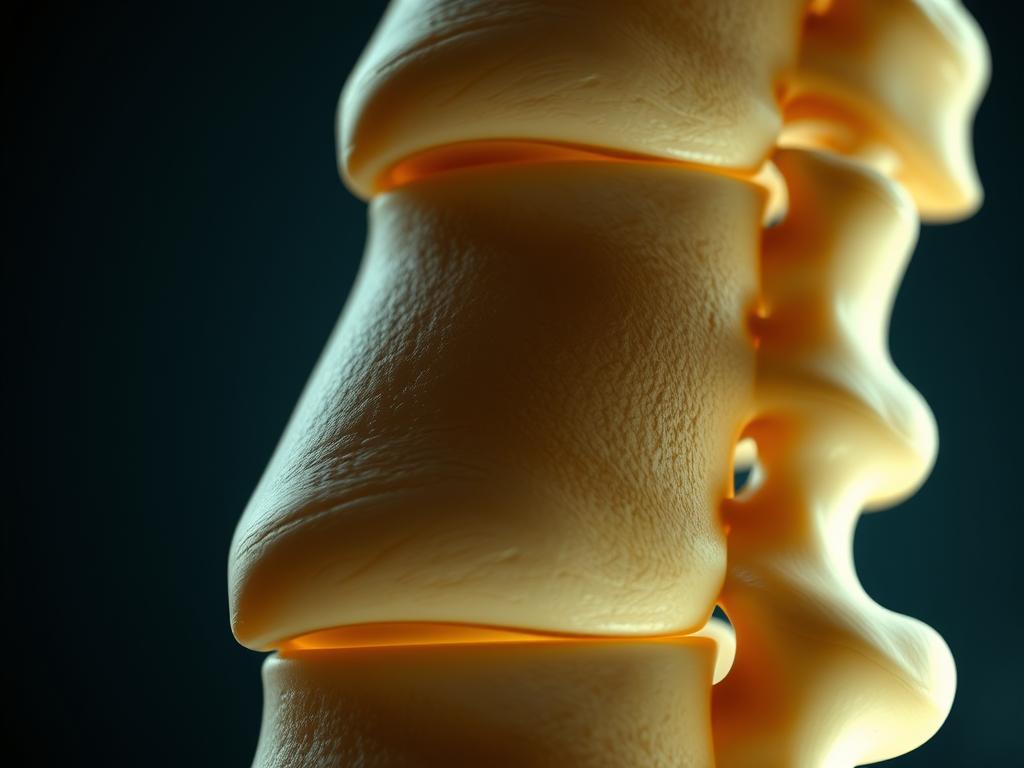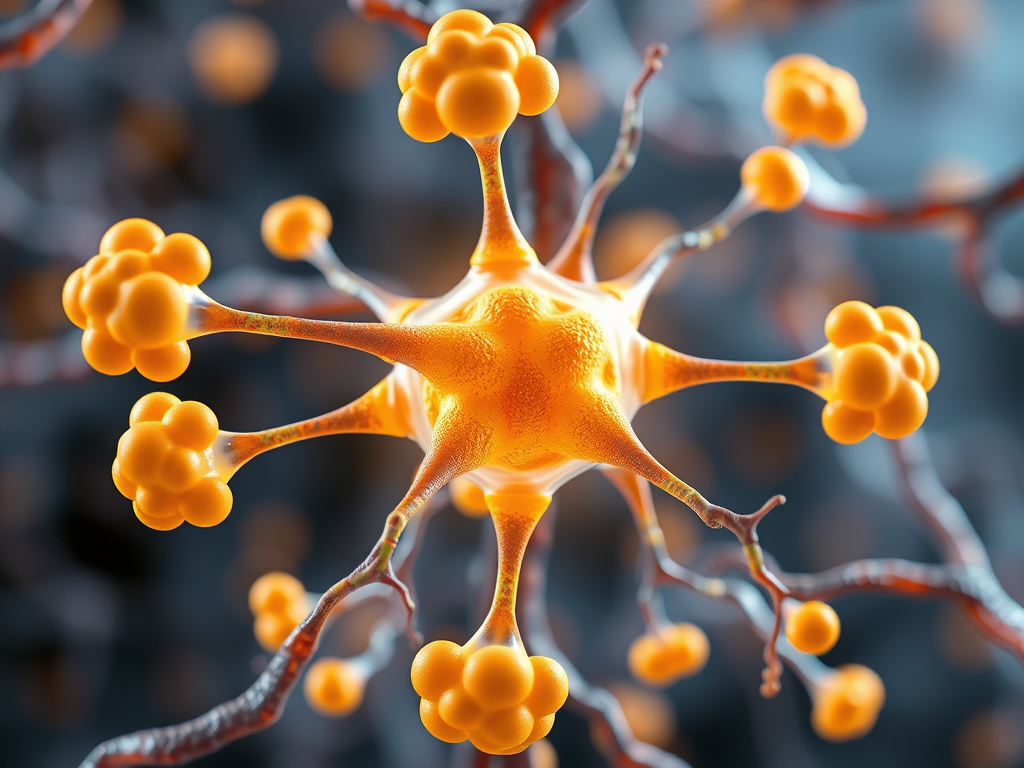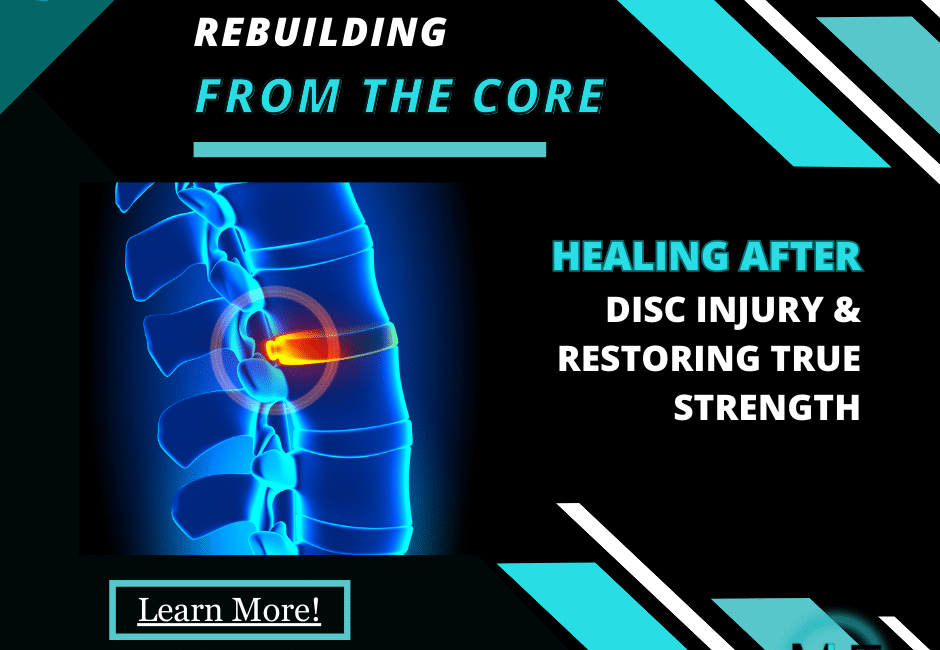Healing After Disc Injury and Restoring True Strength
If you’ve ever suffered a disc injury — especially a bulging or herniated disc — you know that the pain is only part of the story.
What lingers often feels more unsettling: the sudden loss of strength, the difficulty bracing your core, the frustrating sense that your body isn’t responding the way it used to.
You’re not imagining it. And you’re definitely not broken.

Let’s talk about why this happens, how to fix it, and what a real healing protocol looks like — one that honors your nervous system, your strength, and your future.
Why You Can Lose Core Strength After a Disc Injury
When you injure a spinal disc, the trauma isn’t isolated to just the tissue.
There’s often a neurological shutdown — a protective response where your brain inhibits certain muscles (like your deep core, glutes, or multifidus) to prevent further damage.
It’s like your brain hits a “safety switch,” telling muscles not to fire fully.
The result?
- Weak, uncoordinated deep stabilizers.
- Overcompensation from outer muscles (hips, back, neck).
- Pain or stiffness that shows up even away from the injury site (like your shoulder hurting when you turn your head).
Important:
This is not permanent.
This is not a reflection of your true strength.
It can be retrained.
Healing is as much about reconnecting the brain-to-muscle link as it is about rehabbing the tissue.

What Happens If You Ignore the Neurological Deactivation
If you only “stretch” or “strengthen” without reactivating those deep stabilizers:
- Your core will stay unstable under load.
- Other areas (hips, neck, lower back) will work overtime.
- You’ll stay vulnerable to reinjury and chronic pain.
The Fix:
You need to re-establish the neural connection first — gently, consistently — before layering on harder movements.
It’s like repairing the foundation before rebuilding the house.
The Deep Core Reactivation Protocol:
A Step-by-Step Recovery Plan
After countless hours of research and self healing, I have compiled an arsenal of recovery methods — built from top physical therapy research and tailored for people who are serious about true recovery:
Week 1: Neural Reconnection and Activation
Focus: Gently wake up your deep core and stabilizers.
Daily (5–10 minutes):
- Abdominal Drawing In Maneuver (gentle belly-to-spine connection)
- Multifidus Activation (low back swelling without moving the hips)
- Supine Pelvic Tilts (resetting lumbar control)
- Diaphragmatic Breathing (deep, rib-based breathing)
Goal: Feel the small, subtle engagements without force or strain.
Week 2: Stability and Coordination Under Light Load
Focus: Control slow, dynamic movements while keeping the core gently braced.
Daily (10–15 minutes):
- Dead Bug (basic version, slow and controlled)
- Bird Dog (hands-and-knees cross extension)
- Glute Bridge (hips up, ribs down)
- Side-Lying Clamshells (hip stability support)
Goal: Smooth coordination, no speed or heavy loading yet.
Week 3: Integrating Core Stability into Real-World Movement
Focus: Begin resisting forces, integrating posture, and dynamic control
Daily (15–20 minutes):
- Farmer’s Carry (light dumbbells, walk tall)
- Pallof Press (band or cable, resist rotation)
- Anti-Rotation Holds (band/cable)
- Dead Bug with Band Resistance
Goal: Teach your core to handle real-world forces again, safely and confidently.
Quick Notes on Execution
- Breathe with every movement. No straining or breath-holding.
- Stay pain-free. Mild discomfort from muscle work is fine. Sharp, zinging, or shooting pain? Stop.
- Prioritize precision. A few perfect reps beat a pile of sloppy ones.
- Be patient. This is brain training as much as it is body training.
You Are Not Broken
If you’re reading this because you feel disconnected from your strength, frustrated, or discouraged —know this: Your body isn’t broken. Your body is protecting you.
This is not the end of your strength journey.
It’s the reset — the reprogramming phase — before you come back stronger, more connected, and more resilient than ever.
And the first muscle you rebuild?
Trust in yourself.
You’ve got this.

